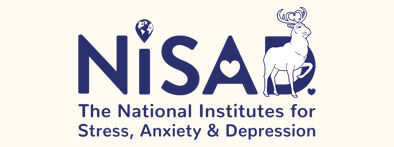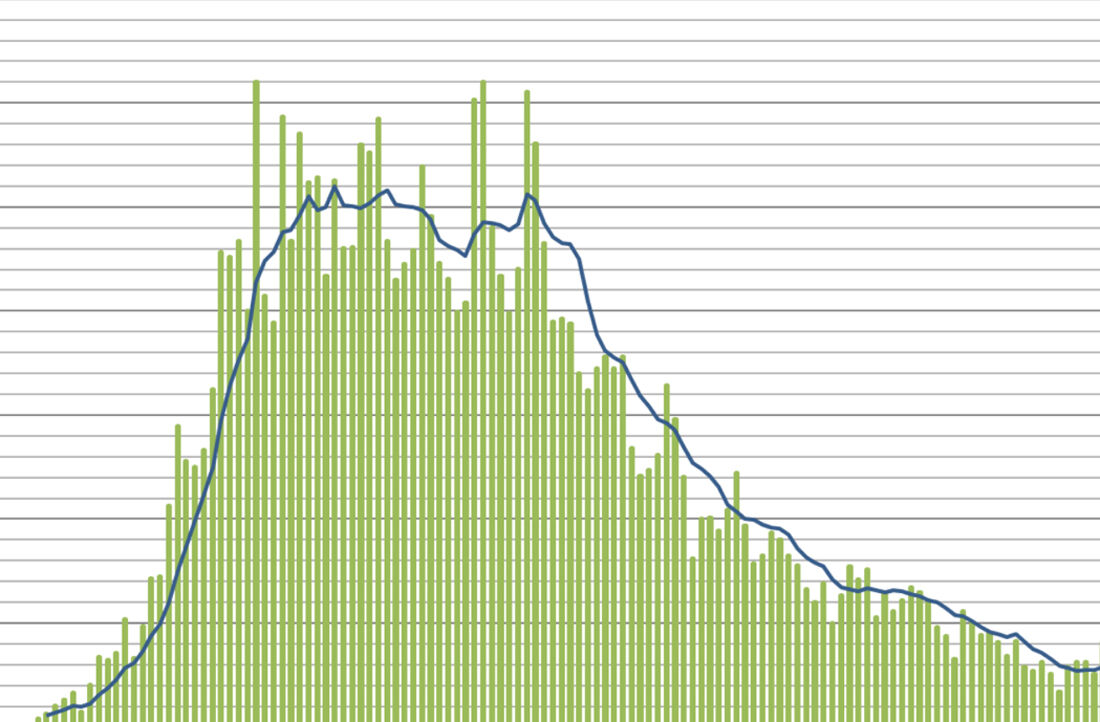Precautionary practice
No 1 – Wash hands regularly: Most transmission of viral infection will be from surface to mouth, by touching your face and wiping across the lips. So above all do not forget to wash your hands regularly.
No 2 – Wear a face mask. This is a respiratory virus so exhaling virus if infected is a fact. You protect others and society by reducing the distance and direction of concentrated viral particles if a face mask is between you and others.
How infectious is the disease?
COVID-19 is a very infective disease, BUT this is not a Zombie apocalypse movie. If you are coughed on by an asymptomatic infected person a) it doesn’t mean you will definitely get infected yourself or b) that you will turn into an infective COVID-19 disease monster instantly if you do catch the virus. Data suggests that there is at least 7-14 days before onset of symptoms. There is a 6-8 day cyclical pattern, or wave, seen in the data for daily case detection, hospital admissions and deaths from COVID-19 throughout the world; suggesting that it is on average 6-8 days from the infection that a person becomes themselves infectious.
What is my chance of catching the disease?
The advice from Governments, on isolation and family/friends bubbles, is aimed to minimise the probability of catching the virus. Based on asymptomatic detection during the summer lull in cases, for the general population, this is between 1 in 2000 to 1 in 5000. Your individual chance of catching the disease is entirely down to the total exposure you willingly place yourself in, OR a member of your family/friend bubble places you in through their behaviour.
So if you don’t wash your hands regularly, don’t wear a face mask and meet in large party groups the probability of catching the virus is 10x to 100x higher. For example, even a President of the United States has caught the virus after some 184days (October) since the pandemic took off in the USA in late March 2020.
The start and rapid increase in COVID-19 cases in the USA can be tracked back to late March 2020
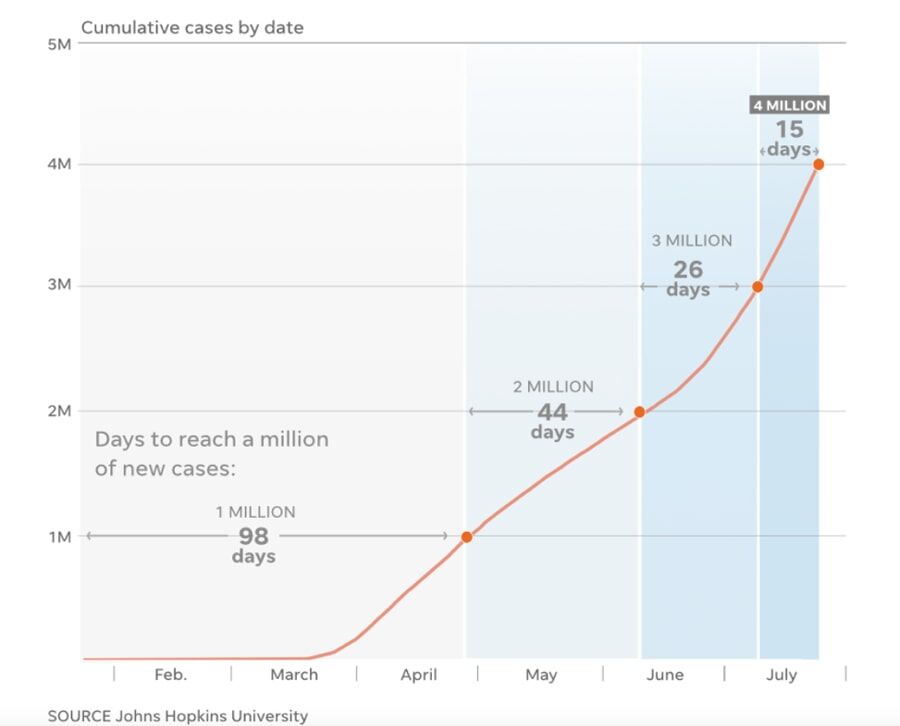
US President Trump tests positive for COVID-19 on the 2nd of October.
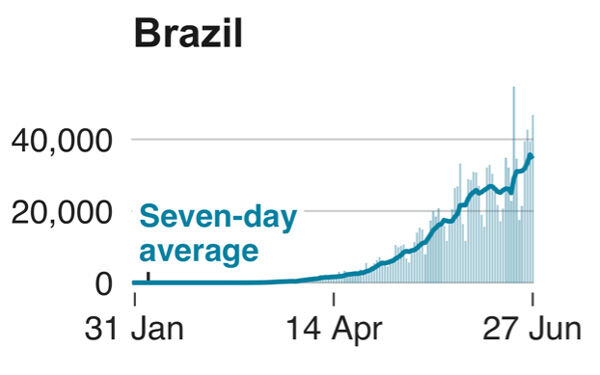
The UK rapid increase in COVID-19 cases started around the 1st of March
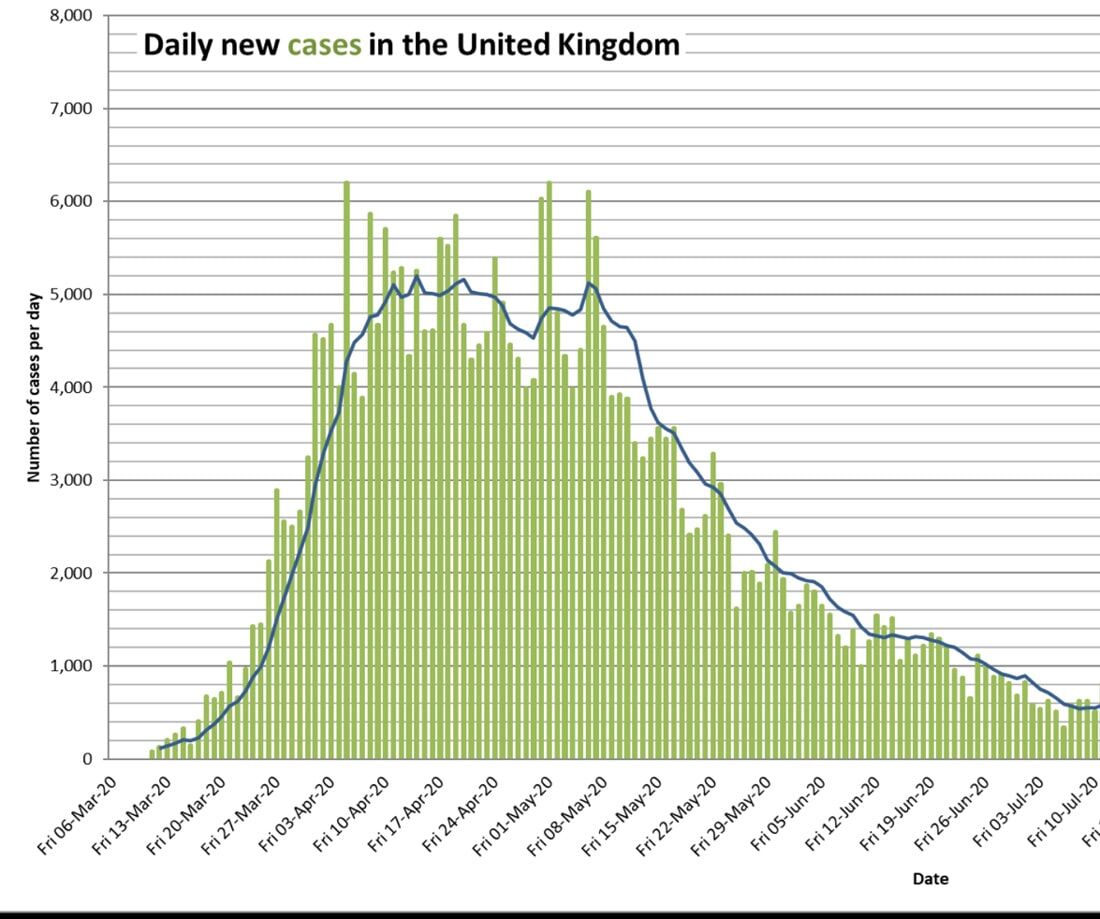
If I do catch it what is my chance of being ill and dying?
There are a lot of factors that influence how seriously ill you will be. For this reason, complete shielding is advised for those with serious prevailing conditions such as breathing problems and heart disease. But importantly for most who are not shielding obesity and diabetes/prediabetes are major factors. Yet being female and blood group O confer an element of protection. Putting these aside the largest determinant of the probability of you being asymptomatic, developing mildly illness, being admitted to hospital or dying from COVID-19 is age.
There has to be caution in interpreting the data as hospitalization and death rates are calculated on COVID-19 confirmed cases. Some 80% of people who are PCR swab positive with no symptoms may never develop symptoms; thus hospitalisation and death rates are for those with symptoms and COVID-19 test positives:
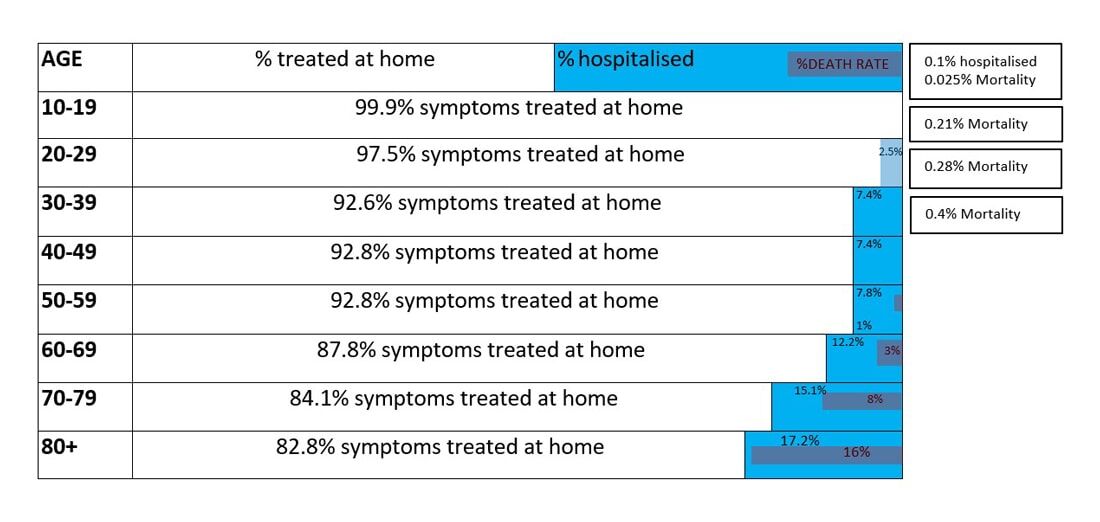
Thus the older you are the more serious the disease is if infected, but even the under 30’s have a measurable risk of dying from COVID-19.
What is different about the second wave of COVID-19 infections?
The incidence of COVID-19 test positives has gone up dramatically but the hospital admissions are not rising as steeply. The reason for this clear disparity is that as we are now testing far more people who do not have symptoms, and thus we are picking up far more “Asymptomatic” individuals. As so many of these will not develop syptoms we are unaware if they are infectious or false positive.
DAILY NUMBER OF HOSPITAL ADMISSIONS WITH THE DIAGNOSIS OF COVID-19 INFECTION
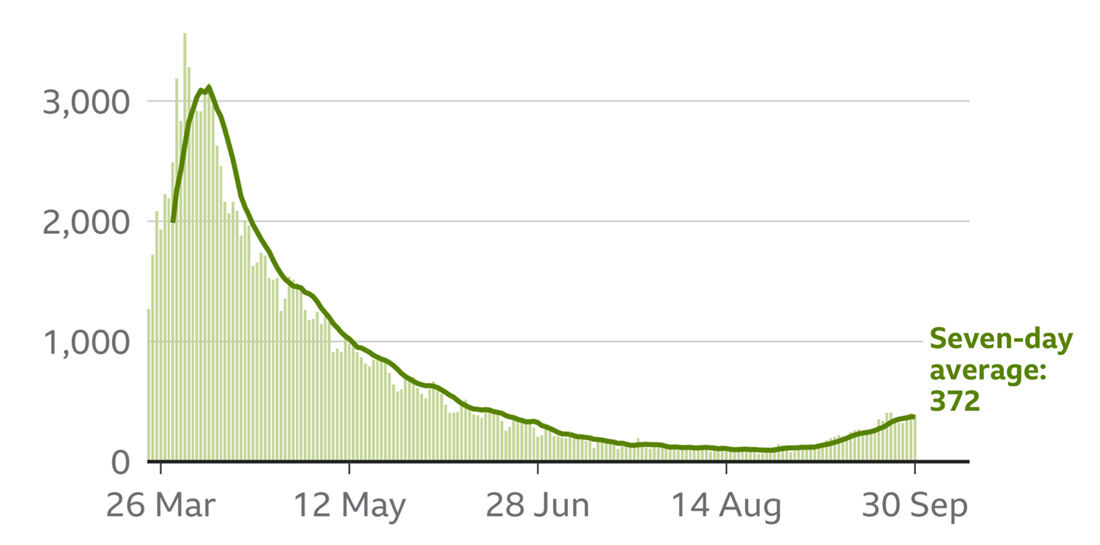
DAILY NUMBER OF PEOPLE IN THE UK TESTING POSITIVE FOR THE VIRUS
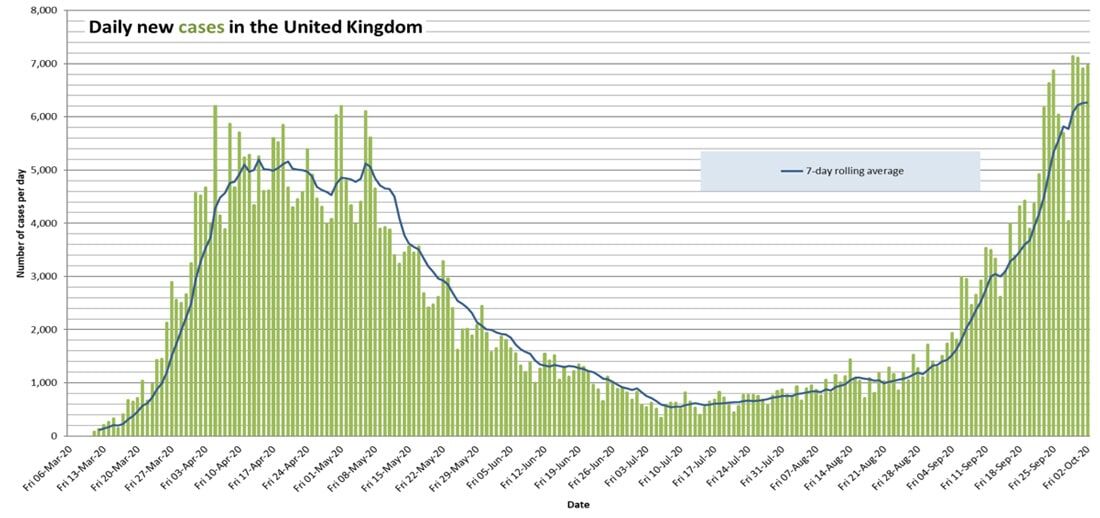
No test is 100% accurate and for a 90% accurate test, the probability that testing positive actually means you have the virus and will develop symptoms can be low if the prevalence of the virus circulating in the community is low (currently about 1-2% in the UK at the 1st of October 2020). But this is a moving target as the confidence in the accuracy of a positive test result meaning active infection rises dramatically with the increased incidence of the virus is in the community (see accuracy and positive predictive value).
Nevertheless, allowing for such false positives, indication of increased spread of the virus is shown from this mass testing of people without symptoms. Furthermore, the proportion of under 35year olds now testing positive is increasing and the more they socialise the more they are likely to screen positive, as shown in the ONS figures below.
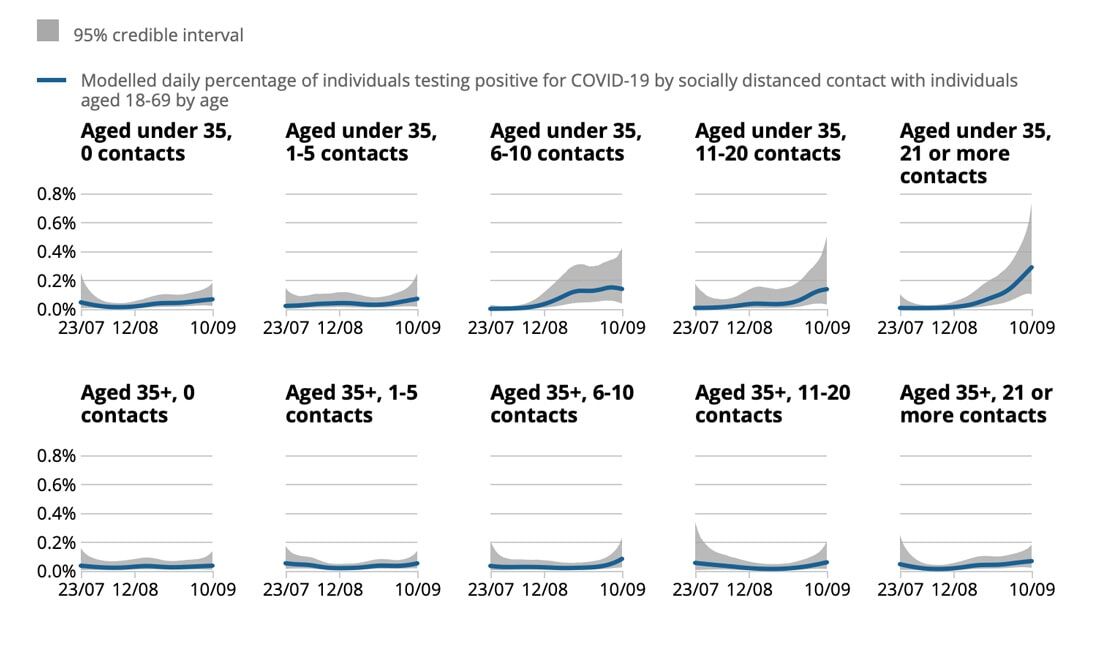
Although this age group is much less likely to develop serious and life-threatening symptoms, it is still a measurable number and deaths do occur.
The incidence of University Students now testing asymptomatically COVID-19 positive is growing across the globe, the issue will be when they return home and the proportion that are true positives infecting their parents and elderly grandparents.
To repeat the earlier message:
If you don’t wash your hands regularly, don’t wear a face mask and meet in large party groups, the probability of catching the virus is 10x to 100x higher. Your individual chance of catching the disease is entirely down to the total exposure you willing place yourself at. Your individual risk of illness and death maybe low depending on how old you are. However, the probability of you infecting and causing the death of a member of your family bubble is entirely in your hands.
A suggestion we make is that all University students are tested for COVID-19 viral infection 24hrs before they return to their family homes?
But then all who travel from one family/friend bubble to another should be tested perhaps?

Professor Ray Iles
Head of Biomedical Science at NISAD
BSc in Bioanalysis, MSc in Immunology and PhD in Molecular Pathology
